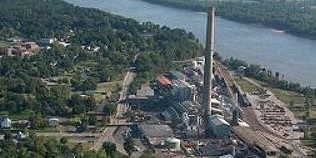Doe Run Smelter to Shut Down Operations-Truth!
Summary of eRumor:
This is a forwarded email about the Doe Run Company located in Herculaneum, Missouri. The email said that the smelter, that has been in operation since 1892, is being shut down because the company can not meet the emissions standards of the U.S. Environmental Protection Agency.
The Truth:
It is true that Doe Run is shutting down the smelter that has been in operation since 1892.
This is the last primary lead smelter in the U.S. and the Doe Run Company, citing a settlement with the Environmental Protection Agency, issued the following release on their website:
The Doe Run Company (Doe Run) has issued the following response related to the company’s Herculaneum, Mo., smelter:
On Dec. 31, 2013, The Doe Run Company’s primary lead smelter in Herculaneum, Mo., which has operated since 1892, will cease operations. As a result of the smelter’s closure, 145 Doe Run employees, and approximately 73 contractors, will lose their jobs. Seventy-five positions will be retained for closure and limited operations. Although the United States is home to a number of secondary lead smelters, which recycle lead from various sources, the Herculaneum facility is the last primary lead smelter in the United States. (Primary smelters produce lead from mined resources.)
In 2010, Doe Run reached a comprehensive settlement with the U.S. Environmental Protection Agency and the state of Missouri. As part of that settlement, the Company agreed to discontinue its smelting operations in Herculaneum by the end of 2013. Over the operating life of the smelter, the Company spent millions of dollars in environmental and other upgrades. Continuing to upgrade the aging smelter to attempt to meet the increasingly stringent environmental regulations imposed on primary lead smelters was not economically feasible given the many other requirements of our business.* We shared this news in 2010 in a press release available on our website.
The Company had hoped to bring a revolutionary lead metal production technology online prior to the closure of the smelter. This proprietary, new technology (also announced in 2010) uses a wet-chemical, electrowinning process instead of a heat-based smelting process, greatly reducing sulfur dioxide and lead emissions. In 2012, we announced that the cost to build a comparably-sized electrowinning plant was too great for our company, given the present economic conditions and other demands on our operations. We continue to pursue opportunities to bring this technology to commercialization, perhaps on a smaller scale.
This past year, we have worked with our Herculaneum employees to help them transition into new opportunities. Some have taken jobs within other divisions of our company; others have found new careers. Those who remain have been provided skill assessment and training, resume and interviewing skill building, financial counseling and a variety of services. We have a dedicated, hardworking and skilled workforce and we are making every effort to help them transition successfully. As noted above, we expect to keep approximately 75 employees at our Herculaneum facility in 2014 to assist with the continuing operations, including refining and alloying of lead metal, and closure of our site.
More than 80 percent of all lead produced in the U.S. is used in either motive batteries to start vehicles, or in stationary batteries for backup power (particular in military, telecom and medical applications). In the U.S., the recycle rate of these batteries is approximately 98 percent, making lead-based batteries the most highly recycled consumer product. These batteries are recycled at secondary lead smelters. We own such a smelter in southern Missouri.
Lead is used in numerous other products, including ammunition and construction materials, as well as to protect against radiation in medical and military applications. While most applications can use secondary lead, those applications that require primary lead will need to import the lead metal in the future. Any additional demand for lead (above that which can be met through recycling at secondary smelters) will also have to be met through imports.
*In 2008, the National Ambient Air Quality Standard for lead was reduced from 1.5 µg/m3 (micrograms of lead per cubic meter of air) to 0.15 µg/m3.
Posted 11/18/13

